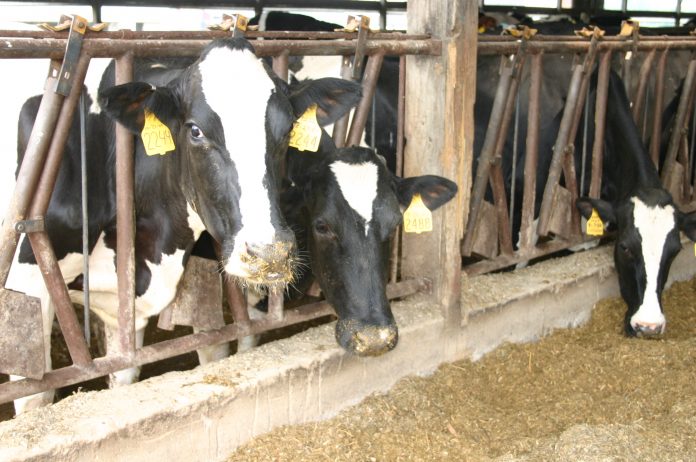We are starting 2018 with Class III milk prices dipping into the $13 per hundredweight (cwt.) range for multiple months in the futures market. That’s compared to the annual Class III averages of $16.17 for 2017 and $14.90 for 2016.
We last saw $13 for five months in the first half of 2015, with May dropping down to $12.76 that year. It is fair to say that no one cares to do a repeat.
By the numbers
Thirty-four Ohio dairy farms completed whole farm and enterprise analysis for 2016. This investment pays them back with tools to identify strengths and areas for improvement across their farm.
Weather-wise, 2016 was a year of slightly-above “normals.” Slightly warmer weather, slightly higher high and low temperatures, and much higher humidity. Yields were generally good, and commodity prices moderate.
Class III ended the year $3.68 per cwt. higher than the beginning of the year, boding well for 2017.
Returns in 2016 returns were better than in 2015 for all herds ($95 per cow vs. $36). Three herds are managed organically, and net returns do not show great improvement, with the 31 conventional herds averaging $34 per cow.
There was the typical range in net return per cow, with the conventional herds ranging from a loss of $792 per cow to a positive $1,379 net return per cow.
Controlling inputs
Cost control has been an obvious and necessary strategy for all Ohio dairy farms since 2015. It is at the forefront, again, for all dairy farms, whether conventionally or organically managed going into 2018.
On the farm, cost control must be balanced with impact on cow, calf and heifer health and welfare, current and future production. This will continue to be a delicate balance for all farm managers and employees.
It is fair to say that the analysis farms have worked hard at lowering cost of production since the high of $22.88 (direct and overhead expenses) per cwt. in 2014. Direct plus overhead costs dropped to $21.42 in 2015, and $18.71 in 2016 (Table 1).
Note that the summary includes a majority of the same farms each year, but there are always a few new ones in, and a few that either exit the industry, or choose not to complete an analysis.
In the table summary, the only non-cash cost is the depreciation charge for the use of the farm’s machinery and equipment (7% of the inventory cost valuation), titled vehicles (15%), and buildings and improvements (5%).
Also note that starting with the 2016 summary, raised feed is valued at total direct and overhead cost. Previously, it also included a charge for operator labor and management. This lowers the cost of feed slightly.
How do you compare?
Use the benchmark reports available in the Farm Business Summaries to identify strengths and opportunities in your dairy farm’s cost structure.
Visit the Ohio Farm Business Analysis and Benchmarking website to view and download the complete 2016 Dairy and Crop Enterprise Analysis Summaries. Find the website at http://farmprofitability.osu.edu. These farms are currently completing input forms for their 2017 analysis.
All farms are welcome to take advantage of this management tool. Cost is minimal due to current generous grant funding, at only $100 per farm for either method discussed above.
Contact us to talk about starting analysis for your farm at 330-533-5538 or shoemaker.3@osu.edu.














